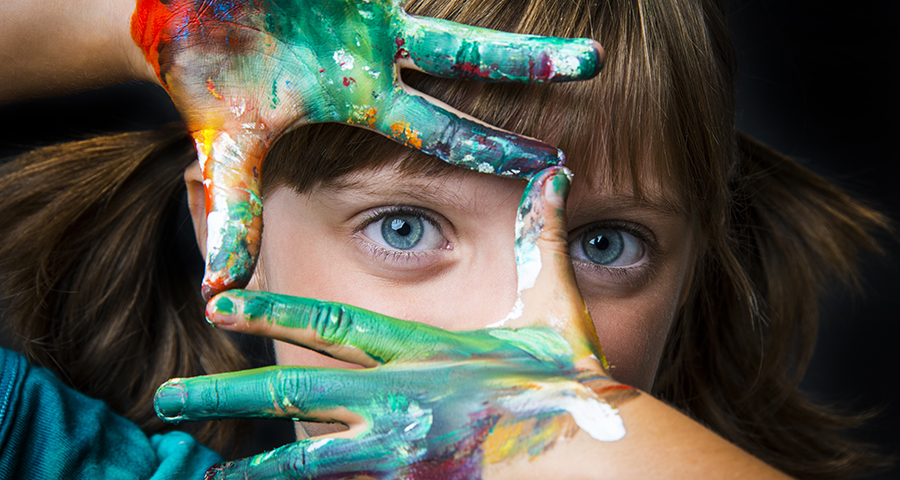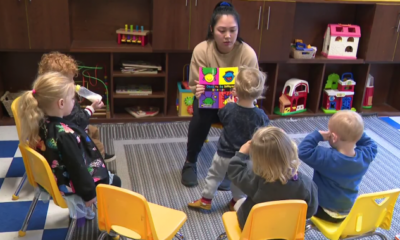Advice
What is AuDHD? Signs Your Child Has Both


Expert / 19 November, 2024 / My Baba
As an ADHD Coach, I’ve worked with numerous children who have ADHD over the years, many of whom also showed signs of undiagnosed autism. It wasn’t my place to address it, but after I recently received my own autism diagnosis, I can see how both conditions have manifested in my life since childhood, hidden in plain sight, just like those children.
What is AuDHD?
AuDHD is a term used to describe people who have both autism and ADHD. These distinct and sometimes contradictory neurodevelopmental conditions share overlapping symptoms, such as executive functioning challenges, an ability to ‘hyper-focus’ on topics of interest, and behavioural differences.
Autism and ADHD influence brain development, affecting how a person perceives, processes, and interacts with the world. While autism is often associated with differences in social communication and sensory processing, ADHD is primarily linked to challenges with attention, impulsivity, and hyperactivity. These conditions together may be hard to identify, especially when signs of one condition mask or blend with another.
Researchers have identified a co-occurrence rate of between 50-70%, despite these conditions only been diagnosable in the same person since 2013 in the UK.
Formal diagnosis may be difficult to access, but understanding AuDHD traits can enable you to effectively understand and support your child, empowering them to accept themselves exactly as they are.
How AuDHD Presents Differently
Here’s how AuDHD may show up in a child:
-
Social interactions and communication
Children with autism often navigate the world differently in social situations, while ADHD can bring impulsivity and a heightened need for stimulation. When a child has AuDHD, they may experience challenges from both perspectives.
For example, they may interrupt frequently or miss social cues due to impulsivity (ADHD) and may struggle with understanding others’ emotions (autism). This combination can lead to misunderstandings or feelings of isolation in social settings, with 68% of AuDHD children having experienced school refusal behavior due to bullying.
To support your child with this, you can talk to them about the reasons behind challenges, helping to explain how misunderstandings in social communication may arise. It’s strongly advisable to teach them safeguarding skills, such as with scripts for asking for help, and coordinating this with their teachers.
Empowering neurodivergent children to connect in the ways that work for them, such as online, can facilitate peer support. For example, they may enjoy attending a social club focusing on an area of interest with structured social interactions.
-
Sensory processing differences
Children with AuDHD may experience heightened and complex sensory sensitivities. As a child, I’d often hang upside down from a tree, seeking adrenaline, stimulation, and strong sensations in my body – which I definitely felt when I fell!
AuDHD-ers may experience over- or under-sensitivity with experiences such as sound, sight, touch, and interoception. They may struggle with recognizing bodily signals, such as hunger or needing to go to the bathroom, seek out experiences such as rocking on their chair, and avoid certain clothes, food, or environments.
These needs may be compounded by seemingly ‘naughty’ behavior, such as shouting or taking risks such as running away from home, as I did.
By helping your child understand and identify their sensory experiences, you can help them meet their own needs. Co-creating strategies and enabling boundaried control where possible, such as by helping you to cook, can be very helpful, along with teaching independence.
Talking to their teachers about sensory needs can also facilitate a better learning environment, with tools such as noise-canceling headphones, fidget toys, and designated sensory-friendly spaces.
-
Executive functioning challenges
Both autism and ADHD impact executive functioning skills, such as planning and organization, which can be amplified for AuDHD-ers.
They may enthusiastically start tasks, but struggle to finish, becoming overwhelmed by a need for things to be ‘perfect’, or intricate self-imposed routines which they cannot sustain.
Transitions such as showering or getting ready for school may feel very difficult due to decision-making and time management challenges. AuDHD children may also be very messy – when I was broken into, the police thought burglars had trashed my bedroom, but they’d just successfully navigated my ‘floordrobe’!
As a parent, you can help your child by understanding and explaining the reasons behind these challenges, supporting them to identify strategies that work for them, and breaking down tasks into chunks.
Visualizing time with a watch can be very helpful, as can supporting them to uphold consistent routines, such as showering at the same time each day or packing their bag the night before school.
Above all, you can encourage them to identify and use their AuDHD strengths, such as innovative problem-solving skills, creativity, empathy, and passion.
-
Behavioral expressions
AuDHD children may show behaviors that seem contradictory at times, such as displaying hyperactivity in one moment before becoming deeply absorbed in an interest the next. ‘Special interests’ are common, with intense focus that can be difficult to switch off.
Emotional regulation challenges may also arise, with AuDHD-ers experiencing intense emotions manifesting externally as a ‘meltdown’, or internally as a ‘shutdown’, due to overwhelm. They may be overly compliant with others, extremely sensitive to rejection, or get into trouble, and hyper-aware of their differences.
They may also use a great deal of energy masking their symptoms in social situations, which could result in intense emotional experiences after arriving back from school.
What can we do to help our children?
Collaboratively supporting your child in learning strategies to self-regulate can help them to set boundaries and self-advocate. Tailored coaching and therapy may also be extremely effective.
Explaining neurodivergence using the metaphor of ‘magic’ that most people don’t have can help children to recognize that with power comes responsibility. It’s not an excuse for poor behavior, but it can explain it, equipping them with accountability and understanding.
Ultimately, it’s important to recognize that these symptoms and experiences are nobody’s fault and have no reflection on your parenting skills. Every child is unique, and signs may vary widely, but a supportive, understanding, and compassionate caregiver can help them understand how to work with their brain, instead of against it.
With unconditional acceptance of your child, you can work together to create an environment where they can thrive, utilize their strengths, and know they’re valued – exactly as they are.
Leanne Maskell is the founder and director of ADHD coaching company ADHD Works, and the author of ADHD an A-Z and ADHD Works at Work.
READ NEXT
Choosing A Mainstream School For A Child With Special Educational Needs
Helping Dyslexic Children Recognize Their Unique Thinking Skills Beyond Exams
-

 Destination8 months ago
Destination8 months agoSingapore Airlines CEO set to join board of Air India, BA News, BA
-

 Breaking News10 months ago
Breaking News10 months agoCroatia to reintroduce compulsory military draft as regional tensions soar
-

 Gadgets3 months ago
Gadgets3 months agoSupernatural Season 16 Revival News, Cast, Plot and Release Date
-

 Tech News12 months ago
Tech News12 months agoBangladeshi police agents accused of selling citizens’ personal information on Telegram
-

 Productivity11 months ago
Productivity11 months agoHow Your Contact Center Can Become A Customer Engagement Center
-

 Gadgets4 weeks ago
Gadgets4 weeks agoFallout Season 2 Potential Release Date, Cast, Plot and News
-

 Breaking News10 months ago
Breaking News10 months agoBangladesh crisis: Refaat Ahmed sworn in as Bangladesh’s new chief justice
-

 Toys12 months ago
Toys12 months ago15 of the Best Trike & Tricycles Mums Recommend























